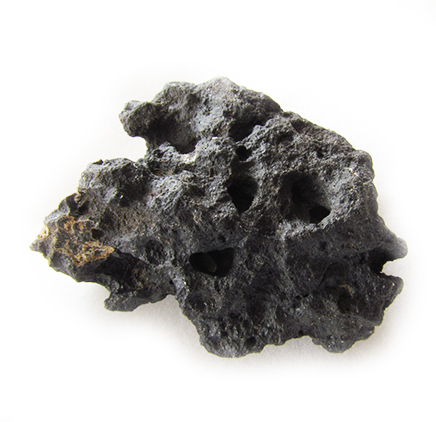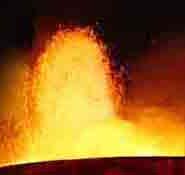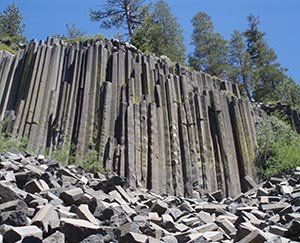Sign up for Lesson Plans, discounts & more!
Basalt A Common Igneous Rock

Basalt is a hard, black extrusive igneous rock. Extrusive means it comes mainly from volcanic eruptions. It has a low silica content which enables this lava to flow quickly and allows volcanic gases to escape without explosive events. It is a fine grained rock and is the most common rock type in the Earth's crust. Most of the ocean floor is made of basalt.
Basalt Mineral Composition and Formation
Basalt is made up of pyroxene, plagioclase, Micas, and amphibole.
It is formed where oceanic plates move apart from each other. It is also formed at hot spots. There are both oceanic hot spots and continental hot spots.

Hot Spots
Hawaii is an example of a basalt eruption at an oceanic hotspot. The Hawaiian Islands Have formed as the Pacific plate moves accross this hot spot. The east side of the island of Hawaii still has active volcanos. Kiluea is the name of the most active vent of this hot spot. Pictured to the left is a Kiluea eruption. To the east of Hawaii another island is forming underwater.
Yellowstone is an example of a continental hot spot. This area is currently dormant but by no means is it extinct.

Famous Landscapes
When basalt cools slowly it can sometimes form huge hexagonal columns creating fantastic landscapes. There are a number such places around the world. Some famous places with these hexagonal Columns are the Devils Postpile National Monument in California (pictured at the right) Photo from the National Park Service, Svartifoss Waterfall in Iceland and the Giant's Causeway in Ireland. For a more exaustive list complete with photos visit From The Grapevine.
Some places on earth have such large basaltic lava flows that they have their own names. The Siberian Traps in Russia and the Deccan Traps of India are two famous locations with extensive deposits. The word Traps is Swedish for stairs because these flows have a layered appearance.
Basalt has many uses. It is used as an aggregate for building roads. It is also used as a building material as cut blocks.

INTERESTED IN MORE? IF SO, YOU MAY WANT TO CHECK OUT OUR OTHER SITES:
fossilicious.com - Our online fossil and mineral rock shop.
fossils-facts-and-finds.com - An educational site about fossils.











